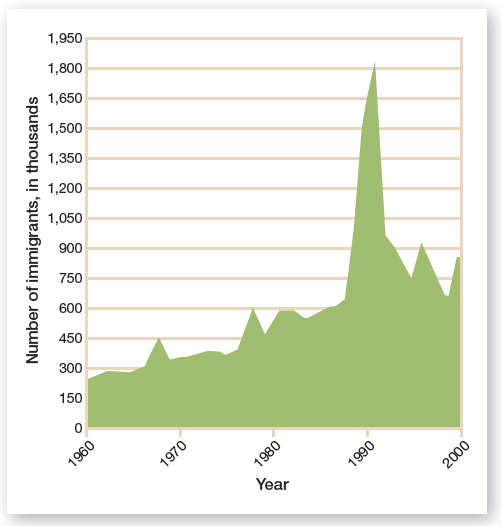Exploring American Histories: Printed Page 877
Exploring American Histories, Value Edition: Printed Page 721
The Implementation of Social Conservatism

Throughout his two terms, President Reagan pushed the New Right’s social agenda with mixed success. Conservatives blamed political liberalism and an increasingly secular society for what they saw as a decline in family values. Their solution was a renewed focus on conservative Christian principles. In addition to trying to remove evolution and sex education from the classroom and bring in prayer and patriotism, the New Right stepped up its opposition to abortion. The Reagan administration required family planning agencies seeking federal funding to notify parents of children under age eighteen before dispensing birth control, cut off financial aid to international organizations supporting abortion, and provided funds for “chastity clinics” that preached sexual abstinence. Despite these efforts, conservatives could not convince the Supreme Court to overturn Roe v. Wade.
Social conservatives also felt threatened by more tolerant views of homosexuality. The gay rights movement, which began in the 1960s, strengthened during the 1970s as thousands of gay men and lesbians made known their sexual orientation, fought discrimination, and expressed pride in their sexual identity. However, the gay rights movement also inspired personal and political attacks. Then, in the early 1980s, physicians traced an outbreak of a deadly illness among gay men to a virus that attacked the immune system (human immunodeficiency virus, or HIV), making it vulnerable to infections that were usually fatal. This disease, called acquired immune deficiency syndrome (AIDS), was transmitted through bodily fluids during sexual intercourse, through blood transfusions, and by intravenous drug use. Scientists could not explain why the disease initially showed up among gay men in the United States; however, New Right critics insisted that AIDS was a plague visited on sexual deviants by an angry God. “The poor homosexuals,” mocked Pat Buchanan, a Reagan adviser. “They have declared war on nature and now nature is exacting an awful retribution.” As the epidemic spread beyond the gay community, mainly through blood transfusions and illegal intravenous drug use, gay rights organizers and their heterosexual allies raised research money and public awareness. By the early 1990s, medical advances had begun to extend the lives of AIDS patients and manage the disease.
Increased immigration also troubled social conservatives as another reflection of the general societal breakdown. The number of immigrants to the United States rose dramatically in the 1970s and 1980s following the relaxation of foreign quota restrictions after 1965 (Figure 27.1). During these decades, immigrants came mainly from Mexico, Central America, the Caribbean, and eastern and southern Asia and tended to settle in California, Florida, Texas, New York, and New Jersey. Like those who came nearly a century before, most sought economic opportunity, political freedom, and escape from wars; and like their predecessors, they brought with them foreign languages, their native cultural practices, and poverty. By 1990 one-third of Los Angeles’s and New York City’s populations were foreign-born, figures similar to the high numbers of European immigrants at the turn of the twentieth century.
As happened during previous immigration waves, many Americans whose ancestors had immigrated to the United States generations earlier expressed hostility toward the new immigrants. The New Right provoked traditional fears that immigrants took away jobs and depressed wages, and questioned whether these culturally diverse people could assimilate into American society. Cities and states, led by California, enacted laws making English their official language. The migration of illegal immigrants intensified the controversy. In 1985 the Reagan administration, with bipartisan congressional support, fashioned a compromise that extended amnesty to undocumented aliens residing in the United States for a specified period and allowed them to acquire legal status. At the same time, the act penalized employers who hired new illegal workers. The measure allowed Reagan and the Republicans to appeal to Latino voters in the Sun Belt states while convincing the New Right that the administration intended to halt further undocumented immigration.